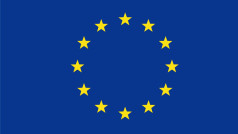The European Environment Agency’s briefing shows that most textile waste in Europe currently ends up in mixed waste, and that sorting and recycling capacity need to be urgently scaled up to ensure better and more circular use of used textiles.
The EEA briefing ‘Management of used and waste textiles in Europe’s circular economy’ shows the current state of textile waste generation, collection systems, treatment capacity and the different classifications for used textiles in Europe.
According to the EEA estimate, around 16 kg of textile waste per person was generated in the EU in 2020. Only about one quarter of this amount (4.4 kg) was collected separately for reuse and recycling, but the rest ended up in mixed household waste. Of all textile waste, 82% came from consumers and the rest was waste from manufacturing or textiles that were never sold.
The EU Waste Framework Directive (WFD) mandates Member States to have separate collection systems for used textiles from next year. The European Commission has also proposed a targeted revision of the WFD to introduce mandatory Extender Producer Responsibility for textiles in all Member States to make producers responsible for the full life cycle of textile products, from their design to waste management. The Commission proposal is also introducing separate collection rules for textiles and sorting requirements for used textiles shipment.
According to a survey conducted by the EEA in 2023, most EU Member States already had separate collection systems in place but mostly to capture reusable textiles. The EEA report warns that, besides separate collection, sorting and recycling capacities need to be scaled up in Europe to avoid that collected textiles end up in incinerators, landfills, or are exported to regions outside the EU.
There is also a need to harmonise definitions and reporting practices on used and waste textiles. This is also clearly shown in the data collected by the EEA that shows wide discrepancies due to the differing interpretations of what constitutes waste and what constitutes used textiles.








